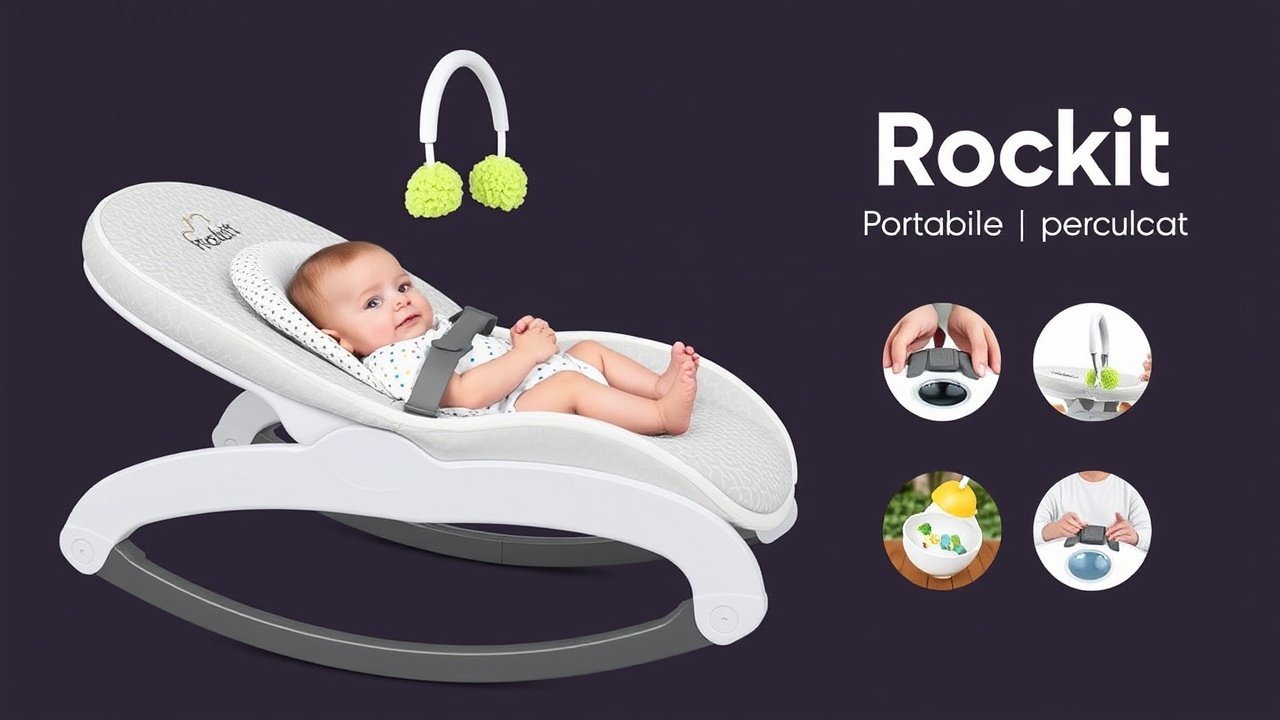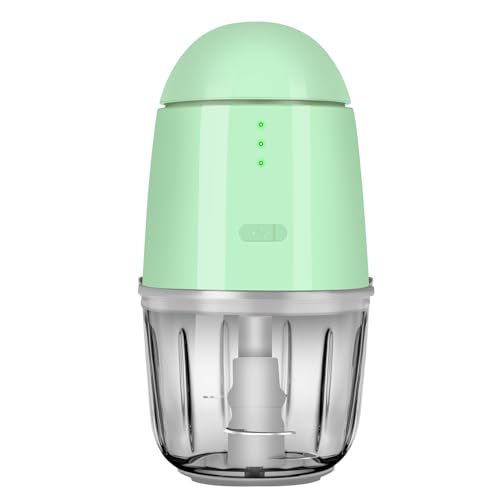When preparing baby food using a food processor, there is a risk of nutrient loss due to the high-speed blades generating heat, which can break down certain vitamins and minerals. This can result in a decrease in the nutritional value of the baby food, a concern for parents seeking to provide their baby with essential nutrients for healthy growth and development. The longer the food is processed, the greater the likelihood of nutrient loss, as exposure to air and light leads to oxidation and a subsequent decrease in nutrient content.
Therefore, it is crucial for parents to be mindful of processing time when using a food processor for baby food preparation. Certain nutrients, such as vitamin C and folate, are more susceptible to degradation when exposed to air and light. These nutrients play a vital role in a baby’s growth and development, and their loss can have long-term effects on the child’s health.
Consequently, parents should exercise caution when using a food processor to prepare baby food and consider alternative methods that minimize nutrient loss, such as steaming or boiling fruits and vegetables instead of processing them in a food processor.
Key Takeaways
- Potential nutrient loss: Food processors can generate heat and air which can lead to the loss of important nutrients in baby food.
- Texture inconsistencies: Overprocessing in a food processor can result in uneven textures, which may not be suitable for babies.
- Overprocessing risks: It’s easy to overprocess food in a food processor, leading to a loss of nutrients and a less desirable texture.
- Allergen cross-contamination: Food processors can retain allergens from previous use, posing a risk of cross-contamination for babies with allergies.
- Difficulty in portion control: It can be challenging to control portion sizes when using a food processor for baby food preparation.
Texture Inconsistencies
Inconsistent Texture: A Potential Drawback
Food processors are designed to break down food into smaller particles, resulting in a pureed consistency. While this may be suitable for some baby foods, it may not be ideal for all types of foods. For instance, some fruits and vegetables may become too mushy when processed in a food processor, resulting in a texture that is unappealing to babies.
Uneven Processing: A Recipe for Disaster
Certain foods may not process evenly in a food processor, leading to chunks or uneven textures in the baby food. This can be problematic for babies who are just starting to eat solid foods, as they may have difficulty swallowing or digesting foods with irregular textures.
Potential Consequences: Feeding Difficulties and Choking Hazards
Texture inconsistencies can lead to feeding difficulties and potential choking hazards for babies. Therefore, parents should be mindful of the texture of the baby food when using a food processor and consider alternative methods, such as mashing or pureeing by hand, to achieve a more consistent texture that is suitable for their baby’s developmental stage.
Overprocessing Risks
When using a food processor for baby food preparation, there is a risk of overprocessing the food, which can result in a loss of nutrients and undesirable textures. Food processors are powerful machines that can quickly turn solid foods into purees, but they can also easily overprocess foods if not used carefully. Overprocessing can lead to a loss of nutrients, as well as a mushy or unappealing texture in the baby food.
Additionally, overprocessing can also affect the flavor of the baby food. Certain foods, such as fruits and vegetables, can become bitter or develop off-flavors when overprocessed in a food processor. This can make the baby food unpalatable for babies, leading to feeding difficulties and potential aversions to certain foods.
Therefore, parents should be cautious when using a food processor for baby food preparation and be mindful of the processing time and speed to avoid overprocessing the food. To minimize the risk of overprocessing, parents can consider using alternative methods for preparing baby food, such as mashing or pureeing by hand. These methods allow for more control over the texture and consistency of the baby food, resulting in a more appealing and nutritious meal for babies.
Allergen Cross-Contamination
| Drawback | Description |
|---|---|
| Loss of Nutrients | Food processors can generate heat which may lead to the loss of nutrients in baby food. |
| Texture Changes | Over-processing in a food processor can result in a mushy texture, which may not be suitable for babies transitioning to solid foods. |
| Oxidation | Exposure to air during processing can lead to oxidation of the baby food, causing a loss of freshness and nutrients. |
| Difficulty in Portion Control | It can be challenging to control portion sizes when using a food processor, leading to potential overfeeding of the baby. |
| Cleaning and Maintenance | Food processors require thorough cleaning and maintenance, which can be time-consuming for busy parents. |
Another hidden drawback of using a food processor for baby food preparation is the risk of allergen cross-contamination. Food processors have multiple components, such as blades, bowls, and lids, which can harbor allergens if not properly cleaned and sanitized between uses. This can pose a serious risk for babies who have allergies or sensitivities to certain foods.
For example, if a parent uses a food processor to puree nuts or dairy products and then uses the same equipment to prepare baby food without thorough cleaning, there is a risk of cross-contamination that can expose the baby to allergens. This can lead to allergic reactions and potential health risks for the baby. Therefore, parents should be diligent about cleaning and sanitizing their food processor thoroughly between uses to minimize the risk of allergen cross-contamination.
In addition to cleaning the components of the food processor, parents should also be mindful of the ingredients they use when preparing baby food. It is important to avoid using ingredients that are common allergens for babies, such as nuts, dairy, eggs, and shellfish, especially if the baby has not been introduced to these foods before. By being proactive about allergen cross-contamination, parents can ensure that their baby’s meals are safe and free from potential allergens.
Difficulty in Portion Control
Using a food processor for baby food preparation can also present challenges in portion control. Food processors are designed to process large quantities of food at once, which can make it difficult to prepare small portions suitable for babies. This can lead to wastage of excess baby food that cannot be stored or consumed before it spoils.
Furthermore, portion control is crucial for babies who are just starting to eat solid foods, as they have small appetites and may not consume large quantities of food at once. Therefore, parents may find it challenging to prepare small portions of baby food using a food processor without creating excess waste. To overcome this challenge, parents can consider using alternative methods for preparing baby food that allow for better portion control, such as mashing or pureeing by hand.
These methods allow for more flexibility in portion sizes and can help minimize wastage of excess baby food. Additionally, parents can also consider investing in smaller-sized food processors or portioning out the baby food into individual servings before processing it in a larger food processor.
Cleaning and Maintenance Challenges
One of the drawbacks of using a food processor for baby food preparation is the cleaning and maintenance challenges that come with it. Food processors have multiple components, such as blades, bowls, and lids, which need to be thoroughly cleaned and sanitized after each use to prevent cross-contamination and ensure food safety. Cleaning a food processor can be time-consuming and labor-intensive, especially if there are small crevices and hard-to-reach areas where food particles can get trapped.
Additionally, some components of the food processor may be dishwasher-safe while others require hand-washing, adding to the complexity of cleaning and maintenance. Furthermore, improper cleaning and maintenance of a food processor can lead to bacterial growth and mold buildup, which can pose serious health risks for babies. Therefore, parents should be diligent about cleaning and maintaining their food processor regularly to ensure that it is safe for preparing baby food.
To make cleaning and maintenance easier, parents can consider investing in a food processor with dishwasher-safe components or purchasing additional accessories, such as cleaning brushes or tools, to help reach difficult areas. Additionally, parents should follow the manufacturer’s instructions for cleaning and maintenance to ensure that their food processor remains in good working condition and safe for preparing baby food.
Cost and Storage Considerations
Using a food processor for baby food preparation can also present cost and storage considerations for parents. Food processors can be expensive investments, especially high-quality models with additional features and accessories. This cost may not be feasible for all parents, especially those on a tight budget or with limited financial resources.
Furthermore, storing a food processor can also pose challenges for parents who have limited kitchen space or live in small apartments or homes. Food processors are bulky appliances that require ample storage space when not in use. This can be problematic for parents who already have limited storage space in their kitchen or home.
To overcome these challenges, parents can consider alternative methods for preparing baby food that are more cost-effective and require less storage space. For example, using a handheld immersion blender or manual masher can be more affordable options that take up less space in the kitchen. Additionally, parents can also consider borrowing or purchasing second-hand food processors from friends or family members to minimize costs and storage space.
In conclusion, while using a food processor for baby food preparation may seem convenient at first glance, there are hidden drawbacks that parents should consider before relying solely on this method. From potential nutrient loss and texture inconsistencies to allergen cross-contamination and difficulty in portion control, there are several factors that parents should take into account when using a food processor for preparing baby food. By being mindful of these drawbacks and considering alternative methods for preparing baby food, parents can ensure that their baby’s meals are nutritious, safe, and suitable for their developmental stage.
FAQs
What are the hidden drawbacks of using a food processor for baby food preparation?
Using a food processor for baby food preparation can lead to over-processing, resulting in a loss of nutrients and a mushy texture. It can also be time-consuming and require more clean-up compared to other methods.
How does over-processing affect the nutritional value of baby food?
Over-processing can lead to a loss of nutrients in baby food, as the prolonged blending or chopping can cause oxidation and degradation of vitamins and minerals.
What are the potential texture issues when using a food processor for baby food?
Using a food processor for baby food can result in a mushy texture, which may not be suitable for babies who are just starting to explore different textures and develop their oral motor skills.
Why can using a food processor for baby food be time-consuming?
Using a food processor for baby food preparation may be time-consuming due to the need to chop ingredients into smaller pieces, process them in batches, and clean the various components of the food processor.
What are some alternative methods for preparing baby food?
Alternative methods for preparing baby food include using a blender, steaming and mashing, or using a baby food maker specifically designed for making baby food. These methods may offer more control over texture and preserve more nutrients in the food.


































